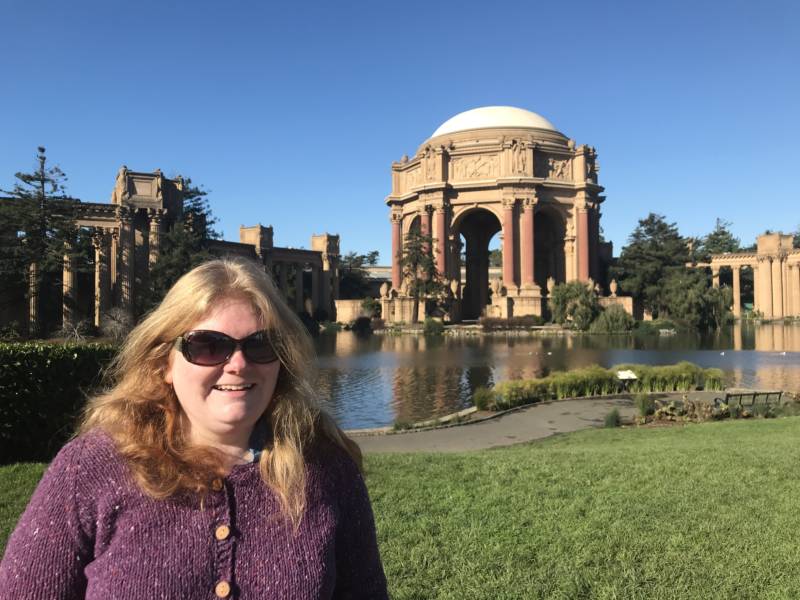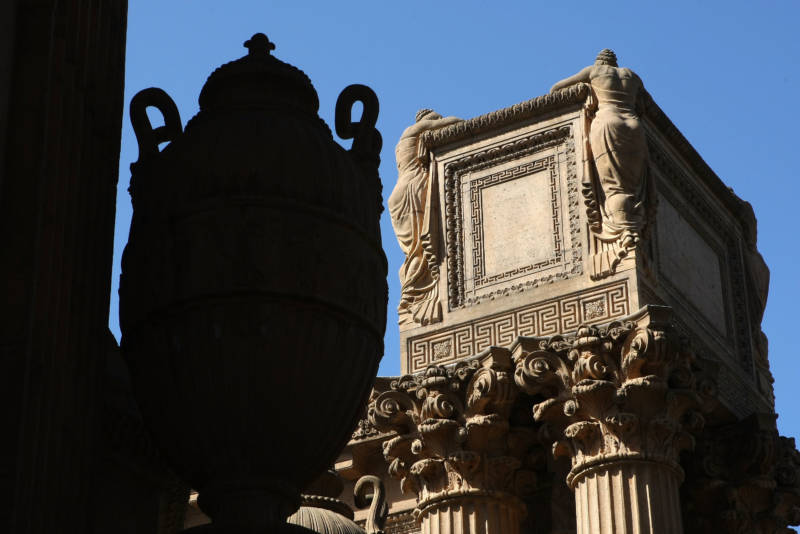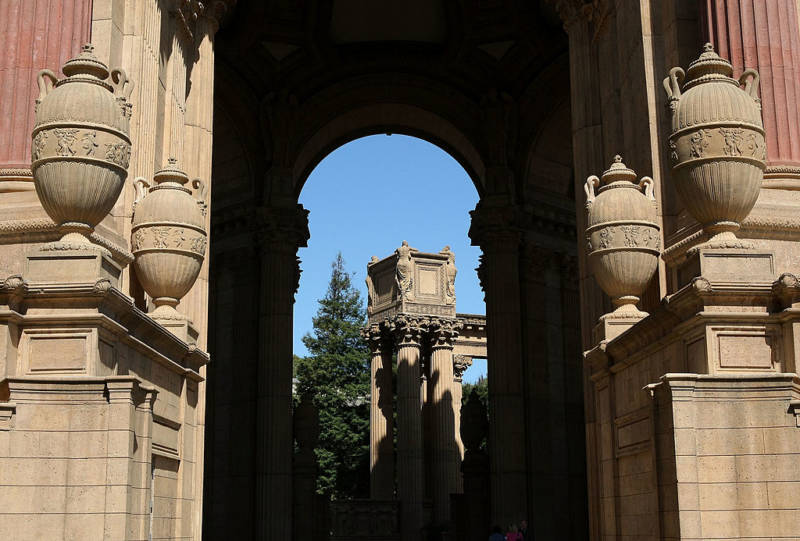The Palace of Fine Arts is an iconic San Francisco location, a favorite for engagement photos and tour groups.
Across a scenic lake sits the giant pastel rotunda, flanked by two colonnades. At the top of those colonnades is a series of large concrete boxes surrounded on each corner by “weeping women.” These women have their backs turned to the viewer and lay their heads upon the tops of the boxes, obscuring their presumably mournful faces.
These women have puzzled some passers-by: “Why do the women at the top of the Palace of Fine Arts have their backs turned?” asks Emily Stauffer.

The 1915 World’s Fair
The Palace of Fine Arts was built for the 1915 World’s Fair, also called the Panama-Pacific International Exhibition. The PPIE honored the completion of the Panama Canal and was seen as a way for San Francisco to show the world it had risen from the ashes of the devastating 1906 earthquake and fire.
Across the city, temporary buildings were constructed for fairgoers. Among them were showstoppers like the Tower of Jewels, which scintillated with thousands of colorful cut glass gems. Courtyards were landscaped, clubhouses tricked out, and a number of “palaces” were built around various themes like transportation, food, agriculture, metallurgy and of course … fine arts.
The Palace of Fine Arts
During the fair, the Palace of Fine Arts showcased works ranging from the Renaissance to more contemporary pieces. The rotunda and colonnade served as the gateway to see the art inside.


